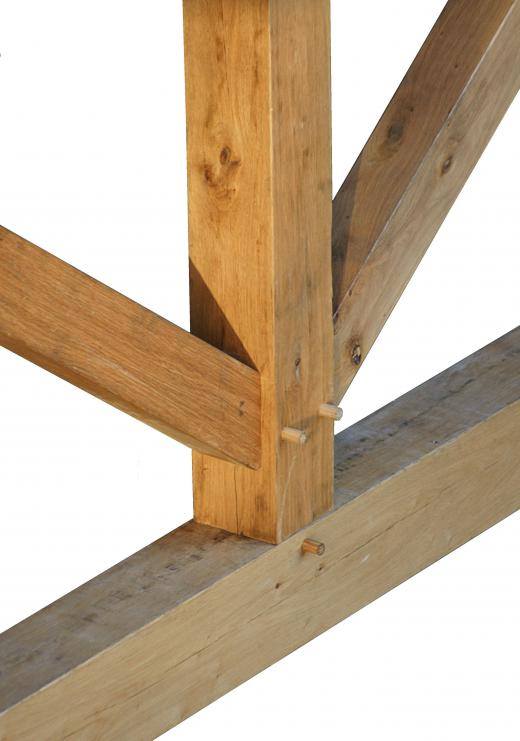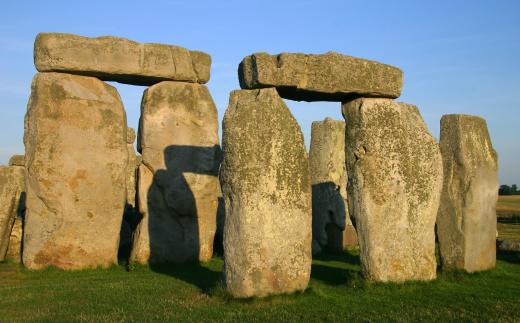A mortise is a cavity or hole that is cut into wood or stone, and is specially intended to receive a tenon, or protrusion, on another piece of wood or stone. Together, the two pieces create a mortise and tenon joint, one that connects two pieces of wood without requiring additional fasteners or adhesives. This type of construction has been used by carpenters and architects throughout history, particularly before the invention of fasteners, like nails and screws.
The easiest way to visualize the relationship may be to think of a set of instructions that reads "insert tab A into slot B." The tenon is tab A and the mortise is slot B. Inserting the tenon into the mortise effectively joins the two pieces.

To work properly, the tenon should fit snugly into the mortise so that the joint does not come apart. Mortises do need to allow enough space for the material of both the mortise and the tenon to expand with heat or moisture. Mortise and tenon joints are most often used to join two items at a 90° angle. When used correctly, this type of construction is solid and secure.

Carpenters and woodworkers use several types of mortise. One that passes all the way through the piece is called a through mortise. These generally create a more secure joint, but may actually cause the piece to crack if it is thin or small. A cavity that does not go all the way through the piece is called a stub mortise. This type is suitable for small, thin pieces, or pieces into which mortises must cut into more than one surface at the same point in the timber's length.
In modern woodworking shops, the mortise is either chiseled out by hand or drilled out using a machine. Mortise jigs are templates used to ensure that the spaces are cut to the same size during mass-production. Millworkers, carpenters who specialize in making pre-fabricated panels and parts to be used on job sites, often create parts with mortises.
Mortise and tenon construction may be one of the most ancient building methods. Examples have been found in archaeological excavations across the world, particularly in China. At one time, entire buildings were commonly made using only mortise and tenon construction. One famous example of this is Stonehenge, which is believed to have been erected between 2600 and 2400 B.C.
